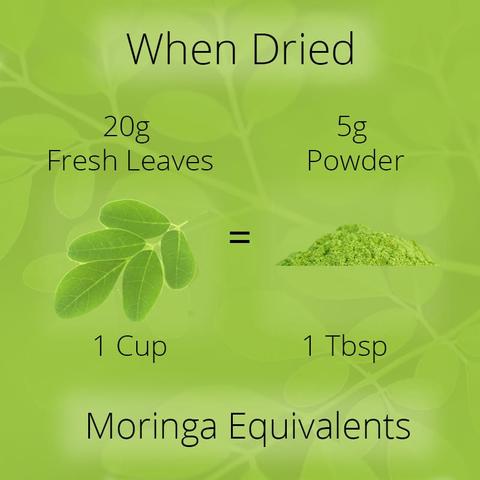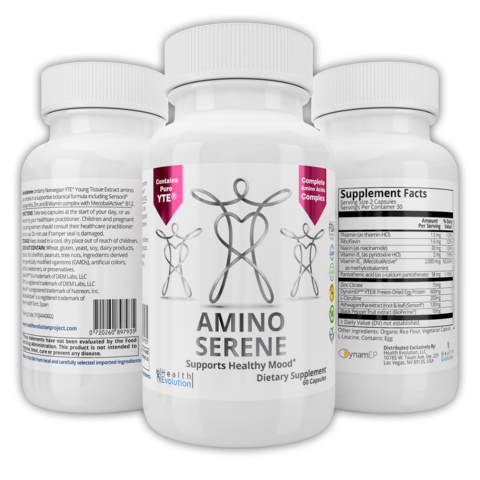MORINGA Syn. HORSERADISH TREE; DRUMSTICK TREE GROWING INFORMATION
BOTANICAL NAME: Moringa oleifera
COMMON NAMES: Moringa syn Horseradish Tree; Drumstick Tree; Ben Tree; Miracle Tree
FAMILY: Moringaceae
ORIGIN: India
From my garden to yours, we'd love to send you some Moringa seeds for you to grow.
Some supplements are better eaten as fresh food – and moringa is one.
Why?
Simple! In this case, fresh is more nutritious than dried.
1lb of dried Moringa started out as 4 lbs of fresh Moringa.

Fresh Moringa and Moringa powder are incredibly nutritious.
Moringa is a superfood known to be an aphrodisiac, hormone & mood balancer as well as anti-inflammatory, anti-viral, and an anti-inflammatory.
“Never Die”
In many African languages, this plant is called nebedaye or “never-die.” It's a tough, drought-resistant tree with documented medicinal use that dates back to 2000 B.C. In fact, practitioners of Ayurvedic medicine have said that this tree can be used to prevent and treat over 300 diseases!
Considering it provides more than 30 natural anti-inflammatory agents and contains more than 40 different antioxidants, it's no wonder that it's referred to as the Miracle Plant.
If that's not enough, all parts of the plant can be used for medicinal purposes, including the root, seeds, flowers, bark, and leaves. And compared to naturally healthy foods that might already be in your kitchen or on your shopping list, Moringa leaves contain:
- 7 times the vitamin C found in oranges
- 4 times the calcium in milk
- 2 times the protein of yogurt
- 4 times the vitamin A in carrots
- 25 times the iron in spinach
- 3 times the potassium in bananas
More than 1,300 research papers detail the many benefits, uses, and known ailments it heals.
PLANT DESCRIPTION
Fast-growing, ornamental and deciduous. If grown outside and not pruned, can reach 8 m high with a drooping spread of 3 m.
Can also be grown indoors and pruned to keep it small.
The stem is erect, with soft wood and corky bark; the leaves are fern-like and 50 cm long. The flowers are white and fragrant. The fruit is pod-like ‘drumsticks' 30 cm long.
Moringa is drought-tolerant and requires a well-drained soil. Moringa grows well in semi-arid zones and on marginal soils, as well as high rainfall areas and fertile soils. It is suitable for subtropical and tropical areas – or for growing indoors.
USES
Food: the pungent root is used as a substitute for horseradish, eaten as a vegetable or pickled. The young foliage and flowers are a ready source of vitamins A and C as well as calcium, phosphorus; the leaves contain up to 38% protein.
Leaves should ideally be cooked – add them to soups, stews, curries and pickles.
Having said that, personally I use the leaves in salads, omelettes, and eat them raw from the tree.
The immature pods can be cooked and curried like okra.
Young seeds are used as a vegetable, mature seeds can be roasted and eaten like peanuts.
An edible oil, ‘ben oil', is expressed from the seeds, used in salads and for lubricating delicate machinery.
Bee forage: nectar source for bees.
Wood: provides fuel and a raw material for cellophane and textile production.
Living fence: Moringa spp. are commonly used for living fences.
Water purification: the seeds are used for clarifying water. The powdered suspension added to the surface of turbid water will bring it to the clarity of tap water within one to two hours, taking bacteria and other microorganisms with the sediment to the bottom.
PLANTING DETAILS
Here's how to take care of your Moringa seeds:
Recommended planting time: plant in spring and summer when the soil temperature reaches 25°C. Or at any time of year if growing indoors.
Planting Depth: plant seeds in a pot, in good quality potting mix, just under the soil. A “rule of thumb” when planting seeds is to cover the seed with the same depth of soil as the size of the seed.
Plant the seeds about 3/4 to 1 inch deep, and tamp the soil down on top of them loosely. They do not like compacted soil. Then, water them thoroughly, put them in a warm place with as much light as possible, and wait. You can give them a little water every day, until they sprout – then, every other day, water until the soil on top is moist.
Keep your pot watered but not sitting in water. Moringa don't like “wet feet”.
Keep your Moringa warm … if you're in a cold climate, a sunny windowsill can be a good place to germinate the seed. You can also put a plastic bad or plastic film (clingfilm/gladwrap) over the pot, to keep the soil warmer, until the seed germinates.
The seedlings like plenty of sun and natural daylight.
Good results can come from starting them in small pots, in loose, organic potting soil that has some coconut coir mixed in with it.
Once they are about 8 inches tall, you can plant them right into the ground if you're in the sub tropics or tropics, or transfer them into larger pots. You can start them in Jiffy Peat Pellets, but peat does not provide enough nourishment for them to thrive.
If you want, you can soak the seeds before planting but, if you do, be prepared – they develop a strong, unusual smell. We usually plant ours right into the potting mix without soaking, but if you soak your seeds, just remember to use the water they soaked in, when you are planting them.
Moringa do not care for clay, heavily compacted soil, vermiculite, or peat pots. Peat pots or any small pots dry out too fast for Moringa seedlings. If that is all you have to use, you will have to keep a close watch on them, so they do not dry out.
If you intend to start them right in the ground, please remember that Moringas are considered to be a tropical tree, and they require sunlight, warmth, and some water to grow properly. Once they are firmly established, with “woody” trunks, Moringas can withstand drought-like conditions – but, they do need sunlight, warmth and water to get off to a good start.
Moringa seeds prefer to sprout in temperatures that are between 70° and 90°F. No matter how you plant them, be sure to allow for good drainage, as their roots will rot in soggy soil. I cannot stress this, enough!
Within 2 weeks of planting your Moringa seeds, you should have seedlings up, sporting healthy, green leaves. Once they put out some distinct branches, water them only once or twice a week. They do not like their roots to be standing in wet soil, so be sure they have good drainage. When they are about 8 to 10 inches tall, we start to harvest a few leaves from each seedling, by cutting the branches in half, which encourages them to “bush” out.
Not too much water, lots of warmth, occasional organic fertilization, some water, and your Moringa seedlings will grow into lovely, valuable Moringa trees!
Once you have your Moringa growing, woody cuttings can be taken and planted (sloping end up) upright in the soil. Cutting material should be 2.5 to 4 cm thick and about 20-30 cm long, with 3 buds per cutting. The cuttings root readily and establish plants easily.
Spacing: place plants 80 to 140 cm apart.
Commercially, Moringa is particularly desirable because it is a very low water-use crop and can be grwon on marginal land (i.e. in semi-arid areas, on poor soils and in saline areas).
Moringa oleifera is being grown commercially on at least one farm at Bowen in northern Queensland, Australia, and in Asia.
The vegetable products of this crop grown in Queensland are being supplied to consumers in southern Australia, often to expatriate Asian communities. Production of these vegetable products in this region is about 35 tonnes per hectare per year.
We're very excited to offer you Moringa seeds, ad all the benefits you can get from simply eating a few Moringa leaves each day.
While Moringa is best eaten fresh, there are other ingredients which are only available as a supplements.
Our range of Amino supplements, for example, containing concentrated proteins and Amino acids, cannot be found in food.
Right now we are particularly excited about our NEW AminoSerene “Advanced”. Find out more here: www.healthevolutionproject.com/advanced

To celebrate our new AminoSerene Advanced, we are GIVING AWAY a FREE bottle of AminoSerene when you buy two or more bottles of new AminoSerene “Advanced”!
Claim yours now while stocks are available.

We are very excited about the new AminoSerene “Advanced” formula – and your future Moringa miracle tree.
As always, do get in touch with any questions 🙂
Sources:
So Just How Nutritious is Moringa Oleifera?
Moringa Benefits Hormonal Balance, Digestion, Mood & More
(Soto 2006; Brockman 2007; SWCC 2007).

